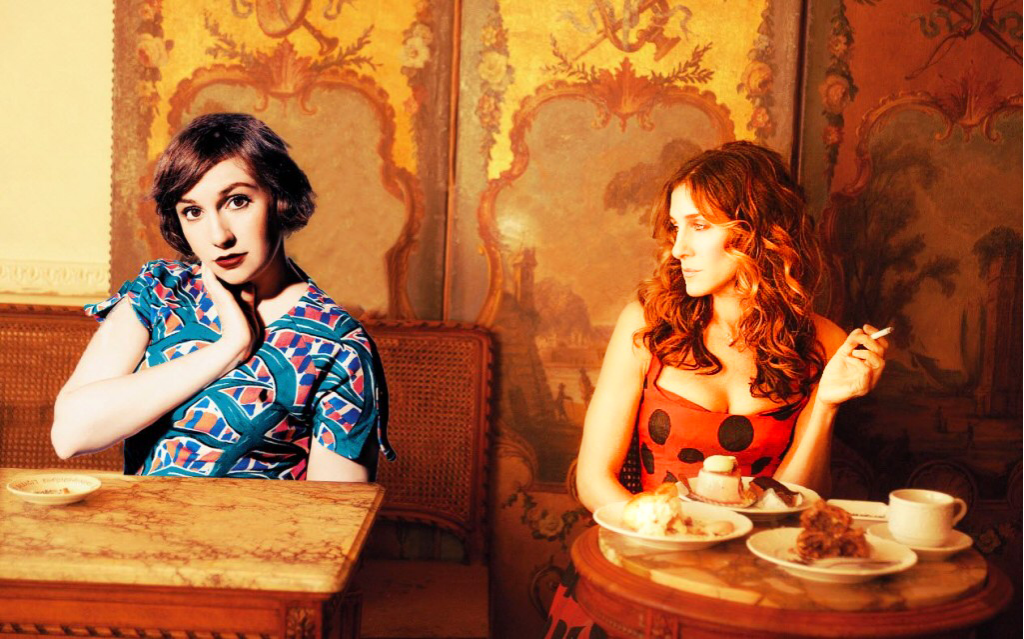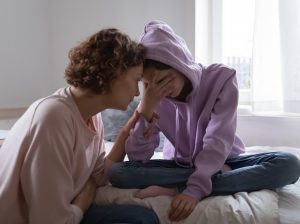Among the female characters that have been represented on television, you’d be hard-pressed to name any that have been more influential on today’s modern women than the iconic ladies of Sex & The City. As someone who started watching SATC several years after it aired, I still find myself identifying with the four leading ladies and some of the issues they go through. I can manage the suspension of disbelief necessary to get through an episode, and Carrie Bradshaw’s predictable “How does a single girl in Manhattan…” internal monologue becomes something to look forward to, like the lesson at the end of an after-school special. Yes, all the women on the show are flawed, and Carrie in particular is extremely selfish. Yet, she’s still self-deprecating enough to be likable, and lives life unapologetically. It’s not hard to find a soft spot for her.
Granted, the show is based on ridiculous premises. Carrie is a writer living in the most expensive NYC neighborhood at the time — the Upper East Side — and she’s still somehow able to afford $500-a-pop Jimmy Choos on her measly writer’s salary. Bogus. Not even the author of the source material from which the show was born believes that Carrie’s life is plausible. According to a HuffoPo Live interview last month with Candace Bushnell, aforementioned author of Sex and The City, if women today are searching for their own, real-life Mr. Big, it would require them searching a different city altogether. “Move to Aspen, because Mr. Big doesn’t really exist in New York,” says Bushnell as she crushes the dreams of a million thirty-somethings in one fell swoop.
So we get it. The show is fictional. Yet, as outlandish as the show might be, its poignant tropes have, in a way, defined a narrative for the entire generation of women who tuned in every week to live vicariously through these four Manhattanites.
*Loud scratch of proverbial record player* Until now.
Cue the latest batch of single girls living in the concrete jungle while attempting to figure out how to have it all: the four younger, more naïve, arguably more selfish and sexually adventurous heroines of the HBO show Girls. For many women, Carrie, Miranda, Samantha, and Charlotte feel like distant aunts slash well-dressed unicorns. Despite their personal woes, they’re always put together, look fabulous, and able to eat out every night at some hot new restaurant without ever having to get on the subway. Hannah, Marnie, Jessa, and Shoshanna live in their own worlds, sure, but they feel more like people you actually “know” and who you could imagine being — who can’t relate to Shoshanna when her bf Ray looks at her like she’s insane for dropping hundreds of bucks on a shirt that’s more air than it is fabric?
So: which show provides for better fictional heroines? Whom would you rather emulate? The unrealistic Jimmy-Choo-wearing, martini-drinking, fearless ladies of SATC, or the millennial, hipster, less-physically-toned, less-with-it, adventurous yet not-yet-fully-formed members of Hannah Horvath & Co.?
Let’s break it down. With four seasons down, and a fifth on the way, the girls from Girls are messier. They’re more unrefined: they don’t talk about working out, waxing their pubic hair, or the latest couture they’ve snagged — at least not yet. They’re more unlikable, which, in a weird way, makes them more likable. And their experiences are similar to what a lot of young women are going through today — much more so than the experiences of the SATC characters at the time the show aired. Dealing with soul-sucking jobs that don’t pay enough, managing relationships and breakups, learning how to exist without constant loans from the Bank of Mom and Dad — find me a twentysomething not dealing with one of these problems and I’ll find you a liar. (Or someone exceptionally smart and lucky.) Hannah, in particular, the “Carrie Bradshaw” of the show — but even more selfish and whinier, if possible — really captures the essence of millennial women. The battles she wages against indecisiveness and inferiority definitely reflect the times.
The world Hannah lives in isn’t the shiny Manhattan of SATC, where everything wraps up nicely and the worst thing that can happen to you is your reservations for the night get cancelled. There are more choices, more room for error, more opportunities for you to look at your life and discover that it just isn’t good enough. Hannah’s journey feeds on that uncertainty. She can’t figure out what she wants to be when she “grows up.” And she’s not the only one whom viewers can relate to; Marnie’s muddled relationships are also very “real.” Sometimes you make mistakes, and fall for someone that has a girlfriend or drinks too much, which leads to you going home with some creepy artist guy. And we all know a free-spirited wild child like Jessa who’s awesome, but can’t get it together, or an uptight Shosh who is desperately trying to break free of anxiety and personal restrictions. And though, like on SATC, the leading ladies have an occasional spat here and there when they’re not busy supporting each other, the girl-fights on Girls are harder to watch. Maybe because they’re more raw, and strike uncomfortably close to home. The same goes for the awkward sex scenes that abound. Far from alienating viewers from the story or its characters, the awkwardness makes it that much more “real,” because, let’s face it, life is freaking awkward.
Both Girls and SATC are about struggles. The difference is that viewers are always sure that the protagonists of SATC will win the day, while the same certainty can’t be applied to Girls. Jessa might not ever get past her heroin addiction, Marnie might never learn what it means to be in a healthy relationship, and Hannah might never become the “voice of her generation.” Sure, SATC has its moments: Charlotte’s divorce, Samantha’s bout with breast cancer, Miranda’s baby-daddy issues, and Carrie’s tennis-match of a relationship with Big. Those are all issues that many women deal with and can acutely identify with. The stakes just don’t feel the same between the two shows, though. Maybe because most viewers can understand what it feels like to wake up one day and feel like your life is going nowhere, but most can’t relate to the feeling of having the biggest problem of your life be choosing between a rich and suave millionaire and a hunky, salt-of-the-earth carpenter.
The factor that drew an entire generation of women to SATC like moths to a flame was how absolutely fun (read: unrealistic) the show is. Still, for better or worse, it’s defined real-life tropes for an entire generation of women; I mean, I know people that moved to New York in an attempt to become the “next Carrie Bradshaw.” She was — and continues to be for many people — a heroine, and someone to aspire to. And you can’t deny what Samantha has done for vibrators and blow jobs. The show’s sprouted myriad catchphrases — i.e. “He’s just not that into you” — and dating touchstones galore. If I had dollar for every time I heard a woman ask “Aidan or Mr. Big?”, I’d be the one living on the Upper East Side with a closet full of Jimmy Choos. Like it or not, SATC will forever be a show that captured the highs and lows of what it’s like to be a modern single woman. And for all you eye-rollers out there, just remember: that show was the butterfly that birthed the tornado. Without SATC, there would be no Girls.
We have to admit, though, that the girls of Girls provide viewers with a more identifiable narrative. Their stories are heroic, but in a more mundane sense. The characters are more flawed, but they’re also more relatable, and more real. Sure, it’s nice to escape into a glittery world full of taxi cabs and nightclubs on the Upper East Side, but when it’s time to wake up in a shoebox apartment in Brooklyn, it’s nice to know we have some company.

















